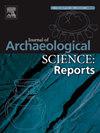Woodland exploitation by early modern military camps and their impact on the forest environment. Anthracological analysis from Ninove-Doorn Noord (1692–1693, 1745, Belgium)
IF 1.5
2区 历史学
0 ARCHAEOLOGY
引用次数: 0
Abstract
Few anthracological studies exist for the modern period (CE 1400–1900) in Europe, particularly for military camps. Nevertheless, wood was a principle strategical resource in the daily life of armies during conflicts. This paper focuses on the anthracological analyses of fire pits from a set of military camps located in Ninove-Doorn Noord (northern Belgium), dating from 1692, 1693 (Nine Years’ War) and 1745 (War of the Austrian Succession). The goals were to observe the dynamic of the landscape between the two periods of occupation and to improve our understanding of the firewood supplies of modern armies at a local scale.
This study focuses on the taxonomic identification of more than 8,000 charcoal fragments. In total, 116 samples from 72 structures were analyzed. The results revealed that the troops mainly gathered firewood in riparian formations dominated by alder, Salicaceae and ash. The charcoal assemblages of the earliest camp (1692–93) present a higher taxonomic diversity than those of the following camp (1745) – 16 and 14 taxa, respectively. Furthermore, the increase of Salicaceae charcoals in the 1745 assemblage suggests a degradation of the environment, probably due to anthropogenic pressure (forestry, agriculture, conflicts). These results highlight the potential of anthracology to improve our knowledge of the impact of warfare on woodland history.
现代早期军营对林地的开发及其对森林环境的影响。来自 Ninove-Doorn Noord(1692-1693 年,1745 年,比利时)的人类学分析
欧洲近代(公元 1400-1900 年)的人类学研究很少,尤其是关于军营的研究。然而,木材是冲突期间军队日常生活中的主要战略资源。本文侧重于对位于 Ninove-Doorn Noord(比利时北部)的一组军营中的火坑进行人类学分析,这些火坑的年代分别为 1692 年、1693 年(九年战争)和 1745 年(奥地利王位继承战争)。本研究的重点是对 8000 多块木炭碎片进行分类鉴定。本研究重点对 8000 多块木炭碎片进行了分类鉴定,共分析了来自 72 个建筑的 116 个样本。研究结果表明,军队主要在以桤木、莎草科植物和白蜡为主的河岸地带采集木柴。最早营地(1692-93 年)的木炭组合比随后营地(1745 年)的木炭组合呈现出更高的分类多样性,分别为 16 个和 14 个分类群。此外,1745 年的木炭组合中盐肤木科木炭的增加表明环境已经退化,这可能是人为压力(林业、农业、冲突)造成的。这些结果凸显了炭疽学在增进我们对战争对林地历史影响的了解方面的潜力。
本文章由计算机程序翻译,如有差异,请以英文原文为准。
求助全文
约1分钟内获得全文
求助全文
来源期刊

Journal of Archaeological Science-Reports
ARCHAEOLOGY-
CiteScore
3.10
自引率
12.50%
发文量
405
期刊介绍:
Journal of Archaeological Science: Reports is aimed at archaeologists and scientists engaged with the application of scientific techniques and methodologies to all areas of archaeology. The journal focuses on the results of the application of scientific methods to archaeological problems and debates. It will provide a forum for reviews and scientific debate of issues in scientific archaeology and their impact in the wider subject. Journal of Archaeological Science: Reports will publish papers of excellent archaeological science, with regional or wider interest. This will include case studies, reviews and short papers where an established scientific technique sheds light on archaeological questions and debates.
 求助内容:
求助内容: 应助结果提醒方式:
应助结果提醒方式:


